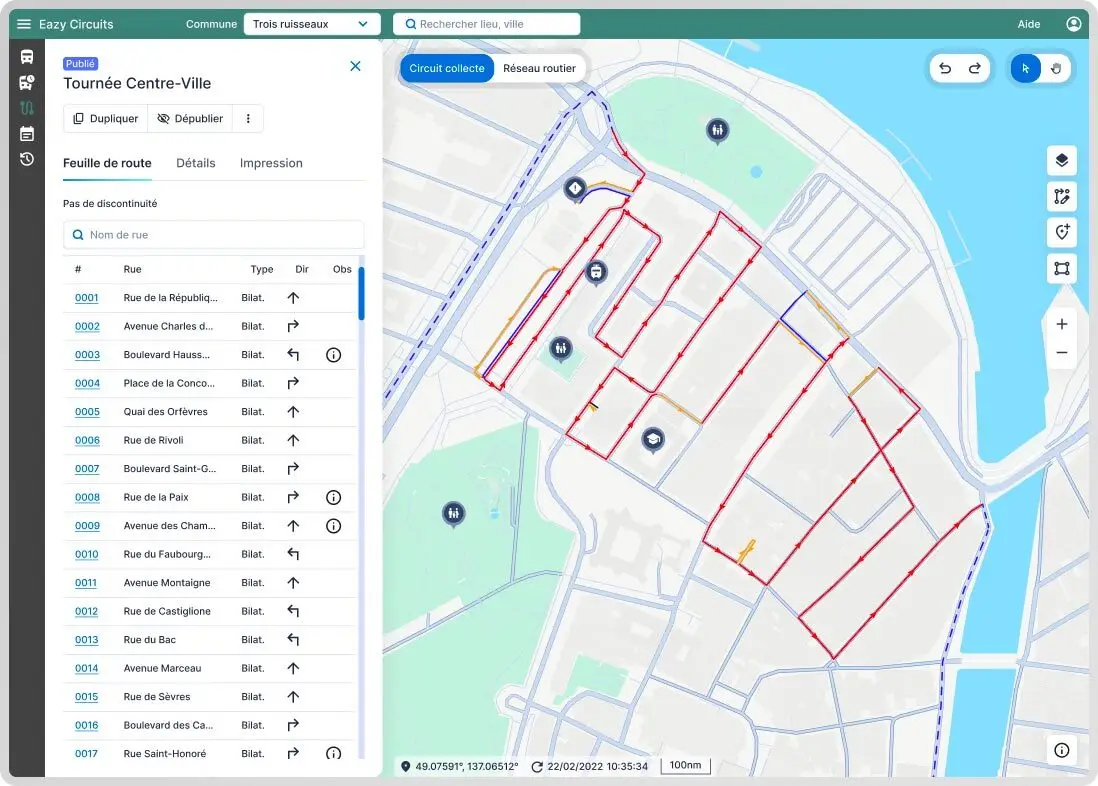exFabrica has truly established a natural and seamless collaboration, making every step of the Discovery project easier.
Their ability to turn each workshop into a concrete deliverable without cutting short the discussions was truly impressive, making the process both efficient and pleasant.
We achieved results in a month and a half, where we had not succeeded in five years. Their expertise and methodological approach clearly made the difference.
Building the product strategy and specifications for an ambitious redesign
- 5 months
- 5 persons
The project
Support CLS in modernizing a critical business tool and realign teams around a clear, validated product vision.
CLS is a key player in geolocation and fleet management through satellite data. Its « Mobilité » Business Unit offers geolocation and fleet management solutions to optimize travel and enhance safety. One of its solutions, EAZY COLLECTE, optimizes waste collection routes by improving operational efficiency and real-time resource management.
The goal of the EAZY CIRCUITS project is to modernize the waste collection route management tool, which had become outdated and lacked user-friendliness, while aligning teams around a shared vision.
As part of this strategic overhaul, we conducted a multi-step Discovery phase: opportunity exploration, hypothesis prioritization, prototyping, user testing, and the facilitation of a user group. This structured approach helped define a clear product vision, unite stakeholders around shared decisions, and re-engage end users.
By bringing all teams together around a clear methodology and impactful deliverables, we enabled CLS to regain the confidence needed to move forward quickly and effectively.
Their product methodology is solid and concrete, with a real-life feel.
Methodological approach
1. Strategy
Opportunity Solution TreeWe collectively explored opportunities using the Opportunity Solution Tree. This approach allowed us to identify and organize various options before prioritizing hypotheses using the RICE method.
2. Discovery
Discovery DisciplineTo structure our Discovery phase, we applied the Discovery Discipline method, ensuring strategic alignment across teams and a shared understanding of key challenges.
User TestingWe validated our hypotheses through an interactive prototype tested with users, as well as by facilitating a user club. This concrete feedback supported decision-making and refined our understanding of user needs.

Specifications DocumentWe then drafted a specifications document using the S.C.R.I.P.T. method, which ensured a clear functional description.
Learn more about the S.C.R.I.P.T. method
Technical stack
- Opportunity Solution Tree
- RICE
- Discovery Discipline
- SCRIPT method
- React
- Figma
Intervention areas
- Product Discovery
- Product Design
- Architecture
- Discovery Manager
In the end, we work hand in hand, as one team.
Results
- Number of user tests
- 6
- Number of User Stories in specifications
- 36
- Average number of tasks per circuit
- 1500
- Number of existing users
- 1000+
Client testimonial
Our exFabrica touch
We carried out a Discovery phase based on the Discovery Discipline method. This approach helped secure strategic decisions and optimize development costs.
Strong commitment to design and usability: a designer was involved throughout the project to ensure a user-centered approach.
MLP (Minimum Lovable Product) approach: this method allowed us to challenge every feature to design an intuitive, appealing, and immediately useful product. The goal: to focus on the essentials and deliver a smooth, pleasant experience without unnecessary complexity.
During a user group session, we co-created the future product interface using paper prototyping: a fun and collaborative experience that sparked real ambassador momentum.